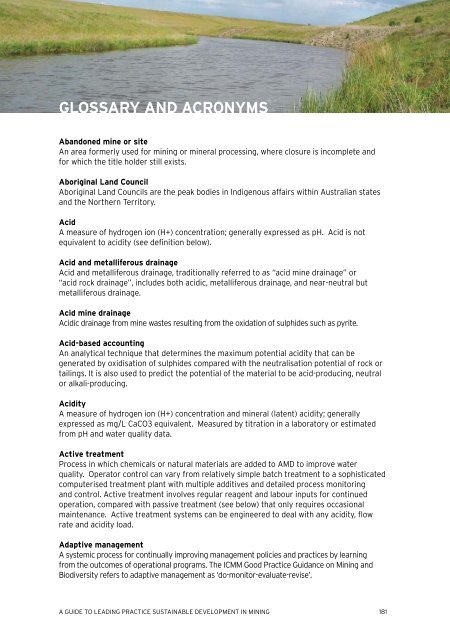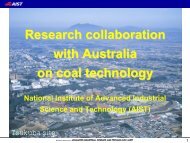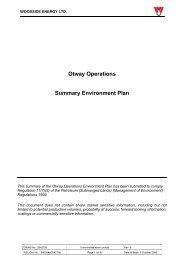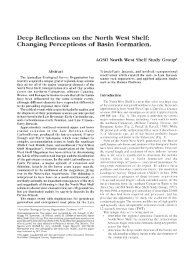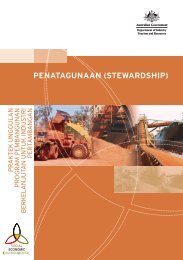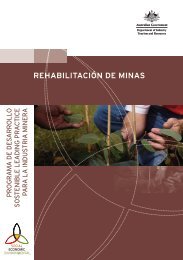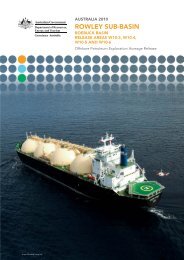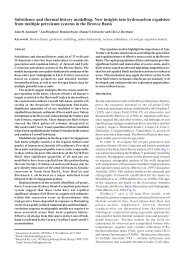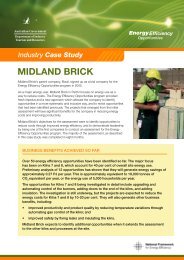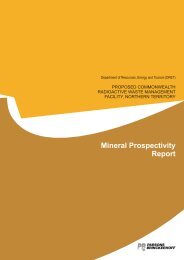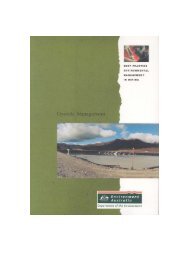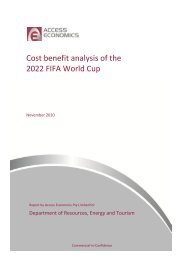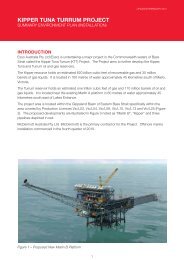A guide to leading practice sustainable development in mining
A guide to leading practice sustainable development in mining
A guide to leading practice sustainable development in mining
Create successful ePaper yourself
Turn your PDF publications into a flip-book with our unique Google optimized e-Paper software.
GLOSSARY AND ACRONYMS<br />
Abandoned m<strong>in</strong>e or site<br />
An area formerly used for m<strong>in</strong><strong>in</strong>g or m<strong>in</strong>eral process<strong>in</strong>g, where closure is <strong>in</strong>complete and<br />
for which the title holder still exists.<br />
Aborig<strong>in</strong>al Land Council<br />
Aborig<strong>in</strong>al Land Councils are the peak bodies <strong>in</strong> Indigenous affairs with<strong>in</strong> Australian states<br />
and the Northern Terri<strong>to</strong>ry.<br />
Acid<br />
A measure of hydrogen ion (H+) concentration; generally expressed as pH. Acid is not<br />
equivalent <strong>to</strong> acidity (see def<strong>in</strong>ition below).<br />
Acid and metalliferous dra<strong>in</strong>age<br />
Acid and metalliferous dra<strong>in</strong>age, traditionally referred <strong>to</strong> as “acid m<strong>in</strong>e dra<strong>in</strong>age” or<br />
“acid rock dra<strong>in</strong>age”, <strong>in</strong>cludes both acidic, metalliferous dra<strong>in</strong>age, and near-neutral but<br />
metalliferous dra<strong>in</strong>age.<br />
Acid m<strong>in</strong>e dra<strong>in</strong>age<br />
Acidic dra<strong>in</strong>age from m<strong>in</strong>e wastes result<strong>in</strong>g from the oxidation of sulphides such as pyrite.<br />
Acid-based account<strong>in</strong>g<br />
An analytical technique that determ<strong>in</strong>es the maximum potential acidity that can be<br />
generated by oxidisation of sulphides compared with the neutralisation potential of rock or<br />
tail<strong>in</strong>gs. It is also used <strong>to</strong> predict the potential of the material <strong>to</strong> be acid-produc<strong>in</strong>g, neutral<br />
or alkali-produc<strong>in</strong>g.<br />
Acidity<br />
A measure of hydrogen ion (H+) concentration and m<strong>in</strong>eral (latent) acidity; generally<br />
expressed as mg/L CaCO3 equivalent. Measured by titration <strong>in</strong> a labora<strong>to</strong>ry or estimated<br />
from pH and water quality data.<br />
Active treatment<br />
Process <strong>in</strong> which chemicals or natural materials are added <strong>to</strong> AMD <strong>to</strong> improve water<br />
quality. Opera<strong>to</strong>r control can vary from relatively simple batch treatment <strong>to</strong> a sophisticated<br />
computerised treatment plant with multiple additives and detailed process moni<strong>to</strong>r<strong>in</strong>g<br />
and control. Active treatment <strong>in</strong>volves regular reagent and labour <strong>in</strong>puts for cont<strong>in</strong>ued<br />
operation, compared with passive treatment (see below) that only requires occasional<br />
ma<strong>in</strong>tenance. Active treatment systems can be eng<strong>in</strong>eered <strong>to</strong> deal with any acidity, flow<br />
rate and acidity load.<br />
Adaptive management<br />
A systemic process for cont<strong>in</strong>ually improv<strong>in</strong>g management policies and <strong>practice</strong>s by learn<strong>in</strong>g<br />
from the outcomes of operational programs. The ICMM Good Practice Guidance on M<strong>in</strong><strong>in</strong>g and<br />
Biodiversity refers <strong>to</strong> adaptive management as ‘do-moni<strong>to</strong>r-evaluate-revise’.<br />
A GUIDE TO LEADING PRACTICE SUSTAINABLE DEVELOPMENT IN MINING 181


